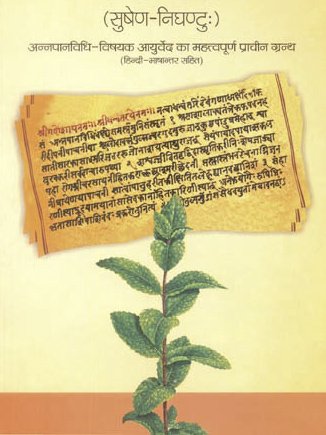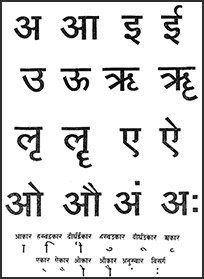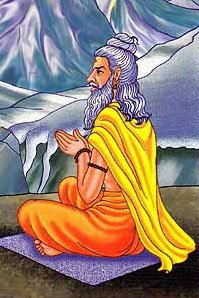Kramana, Krāmaṇa: 18 definitions
Introduction:
Kramana means something in Hinduism, Sanskrit, Marathi. If you want to know the exact meaning, history, etymology or English translation of this term then check out the descriptions on this page. Add your comment or reference to a book if you want to contribute to this summary article.
In Hinduism
Ayurveda (science of life)
Rasashastra (Alchemy and Herbo-Mineral preparations)
Source: Wisdom Library: Rasa-śāstraKrāmaṇa (क्रामण):—Fifteenth of the eighteen Saṃskāra (special purification process). They are used to purify rasa (mercury) as per Rasaśāstra literature (Medicinal Alchemy), and are mentioned in texts such as the Rasaprakāśasudhākara. In Āyurveda, Saṃskāra refers to the “detoxification” process of metals and herbs. The Krāmaṇa-saṃskāra is mainly used for transmutational alchemical purposes. In other words: the last ten saṃskāras are sequentially used for the ends of transmutational and elixir alchemy. Krāmaṇa refers to the process of ‘taking hold’ or ‘progression’ and involves smearing mercury with a mineral and herbal paste and heating it in a fire pit such that it becomes capable, as a transmuting agent, of penetrating both metals and human body tissues.
Source: Google Books: The Alchemical BodyKrāmaṇa (“taking hold, progression”), mercury is smeared with a mineral and herbal paste and heated in a puṭa such that it becomes capable, as a transmuting agent, of penetrating both metals and bodily tissues.
Veterinary Medicine (The study and treatment of Animals)
Source: Shodhganga: Portrayal of Animal Kingdom (Tiryaks) in Epics An Analytical studyKramaṇa (क्रमण) (lit. “one who is undertakaing anything”) is a synonym (another name) for the Horse (Aśva), according to scientific texts such as the Mṛgapakṣiśāstra (Mriga-pakshi-shastra) or “the ancient Indian science of animals and birds” by Hamsadeva, containing the varieties and descriptions of the animals and birds seen in the Sanskrit Epics such as the Ramayana and Mahabharata.
Unclassified Ayurveda definitions
Source: gurumukhi.ru: Ayurveda glossary of termsKrāmaṇa (क्रामण):—Material is made to spread all over by using various measures.

Āyurveda (आयुर्वेद, ayurveda) is a branch of Indian science dealing with medicine, herbalism, taxology, anatomy, surgery, alchemy and related topics. Traditional practice of Āyurveda in ancient India dates back to at least the first millenium BC. Literature is commonly written in Sanskrit using various poetic metres.
Vyakarana (Sanskrit grammar)
Source: Wikisource: A dictionary of Sanskrit grammarKramaṇa (क्रमण).—Doubling. Irregular doubling is looked upon as a fault; cf. क्रमणं वा अयथेक्तम् (kramaṇaṃ vā ayathektam) R.Pr. XIV. 25.

Vyakarana (व्याकरण, vyākaraṇa) refers to Sanskrit grammar and represents one of the six additional sciences (vedanga) to be studied along with the Vedas. Vyakarana concerns itself with the rules of Sanskrit grammar and linguistic analysis in order to establish the correct context of words and sentences.
Purana and Itihasa (epic history)
Source: archive.org: Shiva Purana - English TranslationKramaṇa (क्रमण) refers to “going around (the earth)”, according to the Śivapurāṇa 2.4.19 (“Gaṇapati’s marriage”).—Accordingly, after Śiva and Pārvatī spoke to their sons: “On hearing their words, the powerful Kumāra started immediately from the fixed point in order to go round the earth (pṛthivī-kramaṇa). Gaṇeśa of excellent intellect stood there itself after pondering in his mind frequently with his keen intellect. ‘What shall be done? Where am I to go? I cannot cross the earth. At best it may be possible to go a Krośa. I cannot go beyond it. What avails that happiness which is achieved after going round the earth?’ Please listen to what Gaṇeśa did after thinking thus. He performed the ceremonial ablution and returned, home. He then spoke to his father and mother”.

The Purana (पुराण, purāṇas) refers to Sanskrit literature preserving ancient India’s vast cultural history, including historical legends, religious ceremonies, various arts and sciences. The eighteen mahapuranas total over 400,000 shlokas (metrical couplets) and date to at least several centuries BCE.
Languages of India and abroad
Marathi-English dictionary
Source: DDSA: The Molesworth Marathi and English Dictionarykramaṇa (क्रमण).—n S Advancing, proceeding, passing on.
Source: DDSA: The Aryabhusan school dictionary, Marathi-Englishkramaṇa (क्रमण).—n Advancing, passing on.
Marathi is an Indo-European language having over 70 million native speakers people in (predominantly) Maharashtra India. Marathi, like many other Indo-Aryan languages, evolved from early forms of Prakrit, which itself is a subset of Sanskrit, one of the most ancient languages of the world.
Sanskrit dictionary
Source: DDSA: The practical Sanskrit-English dictionaryKramaṇa (क्रमण).—[krāmatyanena karaṇe lyuṭ]
1) The foot.
2) A horse.
-ṇam 1 A step, Y.1.188.
2) Walking; यो वामृजेव क्रम- णाय रोदसी (yo vāmṛjeva krama- ṇāya rodasī) Ṛgveda 6.7.3.
3) Proceeding.
4) Transgressing.
5) Treatment of words or letters according to the Krama arrangement; Rv. Pr.14.
Derivable forms: kramaṇaḥ (क्रमणः).
Source: Cologne Digital Sanskrit Dictionaries: Shabda-Sagara Sanskrit-English DictionaryKramaṇa (क्रमण).—m.
(-ṇaḥ) A foot. n.
(-ṇaṃ) Going, proceeding. E. kram to go, affix lyuṭ.
Source: Cologne Digital Sanskrit Dictionaries: Benfey Sanskrit-English DictionaryKramaṇa (क्रमण).—i. e. kram + ana, n. 1. Walking, [Mṛcchakaṭikā, (ed. Stenzler.)] 50, 15. 2. Passing, Mahābhārata 3, 16254.
Source: Cologne Digital Sanskrit Dictionaries: Cappeller Sanskrit-English DictionaryKramaṇa (क्रमण).—[masculine] step; [neuter] stepping, walking, crossing.
Source: Cologne Digital Sanskrit Dictionaries: Monier-Williams Sanskrit-English Dictionary1) Kramaṇa (क्रमण):—[from kram] m. a step, [Kātyāyana-śrauta-sūtra iii, 8, 11 [Scholiast or Commentator]]
2) [v.s. ...] the foot, [cf. Lexicographers, esp. such as amarasiṃha, halāyudha, hemacandra, etc.]
3) [v.s. ...] a horse, [cf. Lexicographers, esp. such as amarasiṃha, halāyudha, hemacandra, etc.]
4) [v.s. ...] Name of a son of Bhaja-māna, [Harivaṃśa 2002]
5) [v.s. ...] n. stepping, walking, going, [Ṛg-veda vi, 70, 3; Yājñavalkya i, 188; Mṛcchakaṭikā; Bhāgavata-purāṇa]
6) [v.s. ...] stepping or treading upon (in [compound]), [Śāṅkhāyana-gṛhya-sūtra]
7) [v.s. ...] transgressing (ifc.), [Mahābhārata xii, 16254; Rāmāyaṇa v, 1] (at end)
8) [v.s. ...] a step, [Ṛg-veda i, 155, 5]
9) [v.s. ...] approaching or undertaking anything ([dative case]), [Pāṇini 3-1, 14]
10) [v.s. ...] treatment of words or letters according to the Krama arrangement (id est. doubling letters or words etc.), [Ṛgveda-prātiśākhya xiv.]
11) Krāmaṇa (क्रामण):—[from kram] a n. a particular process applied to mercury, [Sarvadarśana-saṃgraha]
12) [from krānta] b See, [ib.]
Source: Cologne Digital Sanskrit Dictionaries: Yates Sanskrit-English DictionaryKramaṇa (क्रमण):—(ṇaḥ) 1. m. A foot. n. Going.
Source: DDSA: Paia-sadda-mahannavo; a comprehensive Prakrit Hindi dictionary (S)Kramaṇa (क्रमण) in the Sanskrit language is related to the Prakrit words: Kamaṇa, Kamaṇī.
[Sanskrit to German]
Sanskrit, also spelled संस्कृतम् (saṃskṛtam), is an ancient language of India commonly seen as the grandmother of the Indo-European language family (even English!). Closely allied with Prakrit and Pali, Sanskrit is more exhaustive in both grammar and terms and has the most extensive collection of literature in the world, greatly surpassing its sister-languages Greek and Latin.
Kannada-English dictionary
Source: Alar: Kannada-English corpusKramaṇa (ಕ್ರಮಣ):—[noun] the act or an instance of moving; a move; movement.
Kannada is a Dravidian language (as opposed to the Indo-European language family) mainly spoken in the southwestern region of India.
See also (Relevant definitions)
Ends with (+78): Abhikramana, Abhinishkramana, Abhyakramana, Adhikramana, Adhyakramana, Akramana, Anakramana, Anatikramana, Anukramana, Anuparikramana, Anyakramana, Anyasamkramana, Apakramana, Arthasamkramana, Atikramana, Aupasamkramana, Avakramana, Avikramana, Aviprakramana, Cankramana.
Full-text (+29): Adhikramana, Anukramana, Atikrama, Apakramana, Akramana, Samkramanaviropana, Pratikramanavidhi, Pratikramanasutra, Nishkramanaprayoga, Vikramanadharmitva, Ajnatikrama, Marjarikramana, Apakranti, Atikram, Kamani, Samkramani, Parikramana, Abhikramana, Avakramana, Utkiramanam.
Relevant text
Search found 6 books and stories containing Kramana, Krāmaṇa, Kramaṇa; (plurals include: Kramanas, Krāmaṇas, Kramaṇas). You can also click to the full overview containing English textual excerpts. Below are direct links for the most relevant articles:
Rig Veda (translation and commentary) (by H. H. Wilson)
Jainism and Patanjali Yoga (Comparative Study) (by Deepak bagadia)
Six Avasyakas (essentials) < [Chapter 3 - Jain Philosophy and Practice]
The Brahma Purana (by G. P. Bhatt)
The Vishnu Purana (by Horace Hayman Wilson)
Taittiriya Upanishad (by A. Mahadeva Sastri)
Chapter XI - Brahman the Self < [B - Brahmavidyā Explained]
The Linga Purana (by J. L. Shastri)
Chapter 70 - Various Creations (sṛṣṭi-vistāra) < [Section 1 - Uttarabhāga]